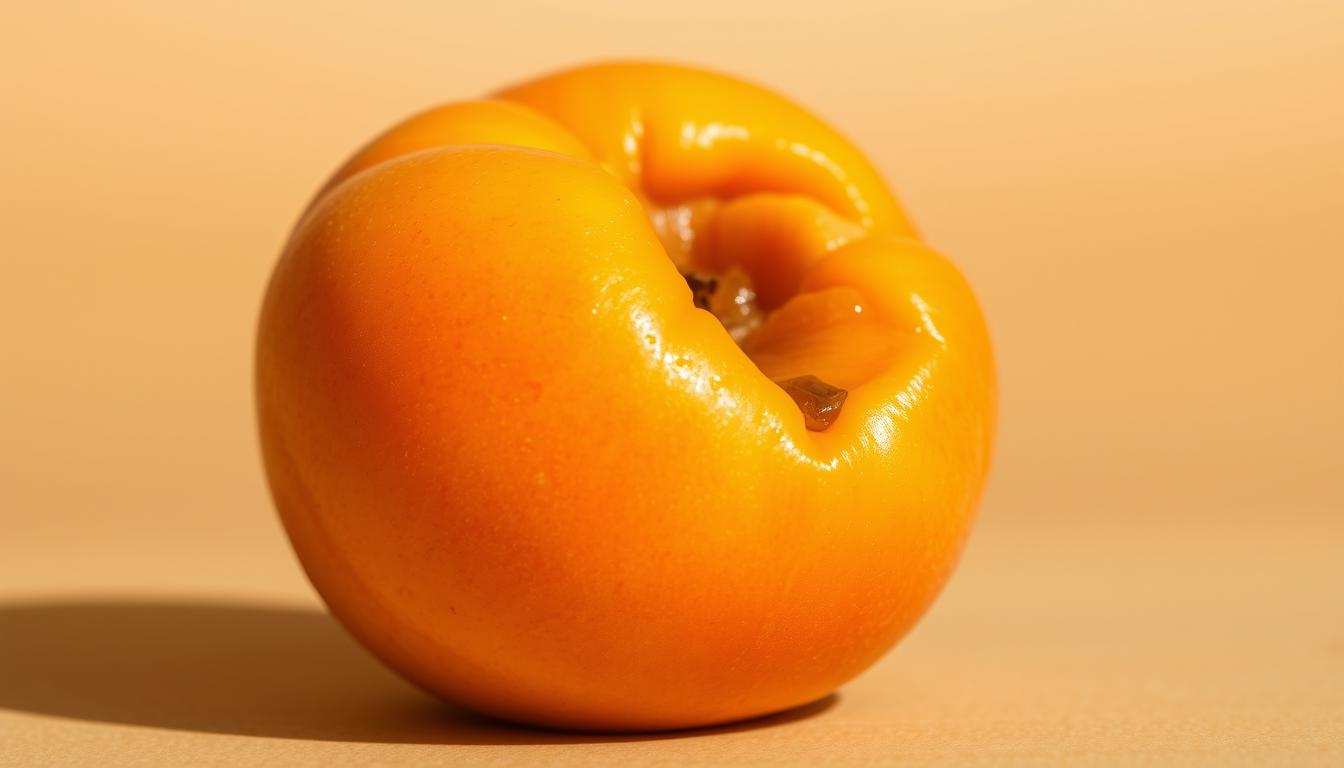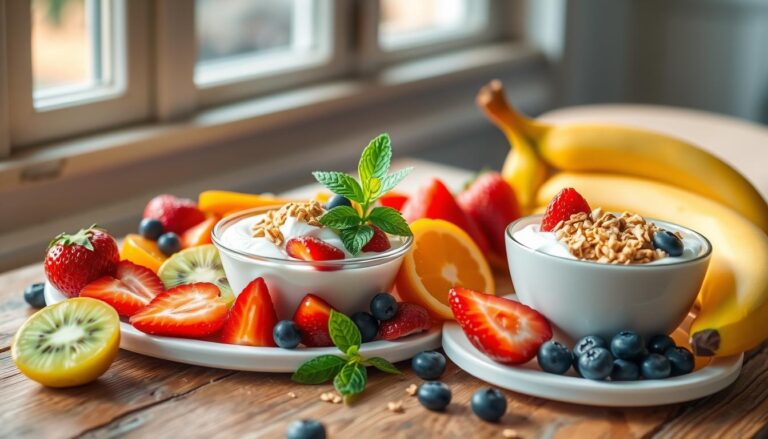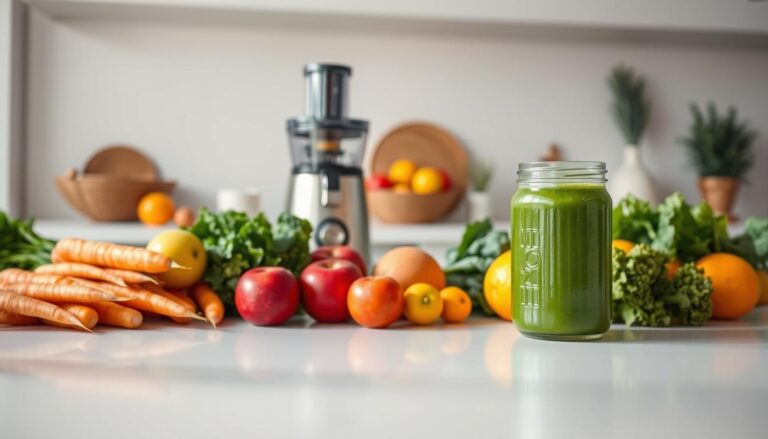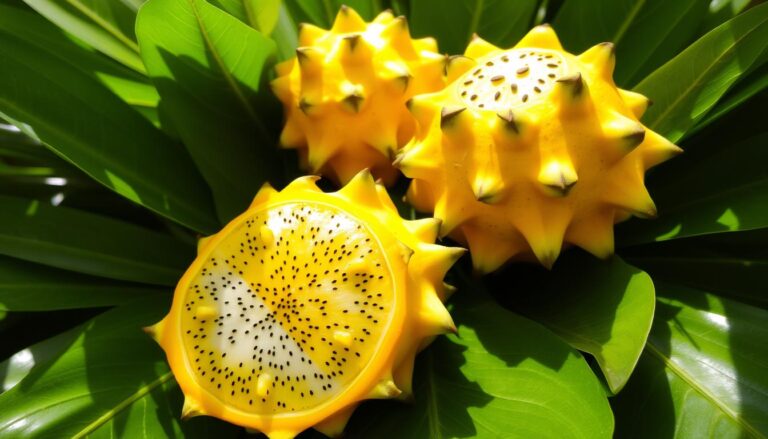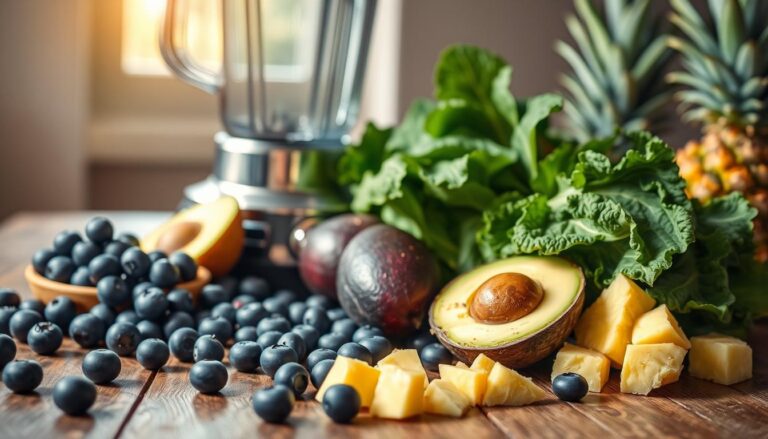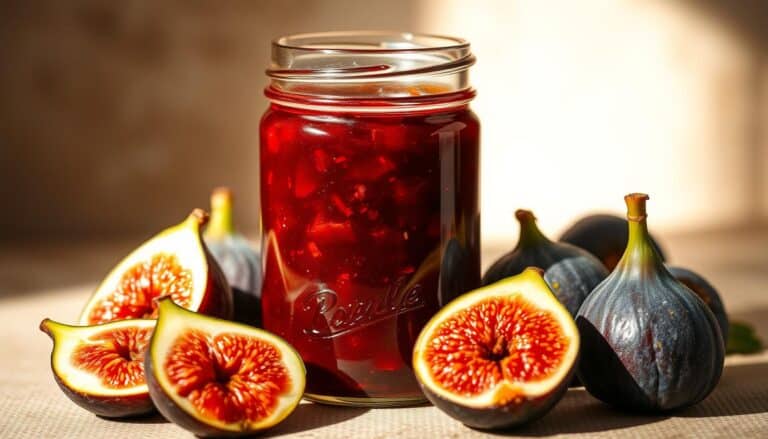Nectarine How To Ripen Your 3 Hard Fruits
Do you love the taste of a perfectly sweet nectarine? You’re not alone. Getting nectarines just right can be a challenge. Knowing how to ripen them can make all the difference.
Nectarines are a summer favorite, full of flavor and nutrients. Their smooth skin and juicy inside make them a treat when ripe. Whether you bought them from a farmer’s market or the store, learning to ripen them is key.
In this guide, we’ll show you three easy ways to make hard nectarines soft and sweet. We’ll teach you how to ripen them without bruising or spoiling.
Key Takeaways
- Nectarines are a nutritious stone fruit best enjoyed when fully ripe
- Proper ripening techniques can transform hard fruit into sweet treats
- Multiple methods exist for ripening nectarines at home
- Temperature and humidity play crucial roles in fruit ripening
- Patience is essential when waiting for nectarines to reach optimal sweetness
Understanding Nectarine Ripeness Indicators
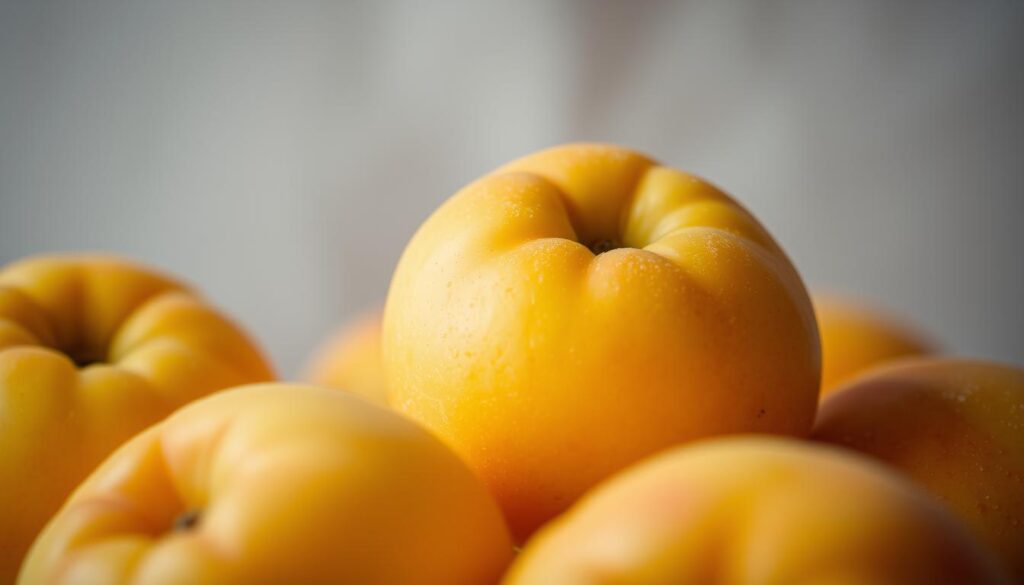
Choosing the perfect summer fruit is all about paying attention. Nectarines are delicate and need careful checking to see if they’re ripe. Knowing how to spot the signs can make picking fruit a breeze.
To know when a nectarine is ready, you need to look at a few key things. Your senses will help you pick the best fruit.
Recognizing Visual Ripeness Signals
Visual signs are the first thing to check when picking a nectarine. Look for these important signs:
- Uniform color without green patches
- Deep, rich coloration ranging from golden yellow to deep orange-red
- Smooth, unblemished skin without bruises or soft spots
Mastering Touch and Aroma Techniques
Touch and smell are also important for checking ripeness. Gently press the nectarine near its stem. A ripe fruit will feel slightly soft but not mushy.
Your nose can also tell if a nectarine is ripe. A ripe nectarine smells sweet and fragrant. If it smells fresh and inviting, it’s ready to eat.
Understanding Color Transformations
Color changes are a good way to check if a fruit is ripe. Nectarines go from green to yellow, orange, and deep red as they ripen. The more vibrant the color, the riper the fruit.
By using your eyes, touch, and smell, you’ll get better at picking the tastiest nectarines every time.
The Perfect Environment for Ripening Nectarines
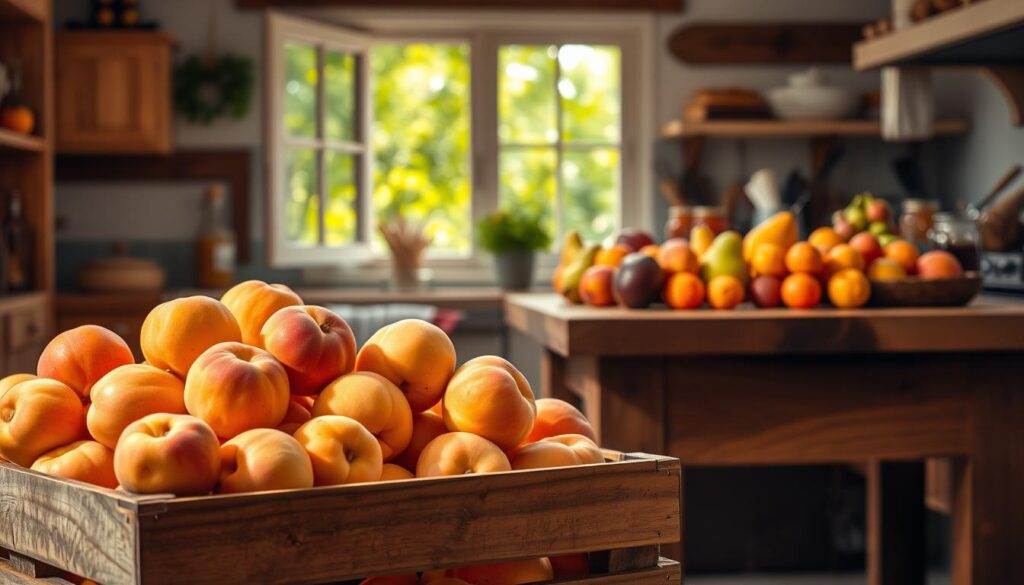
Ripening prunus persica fruits like nectarines needs careful attention to their environment. The right conditions will turn your hard yellow flesh nectarines into sweet, juicy treats.
Understanding their specific needs is key to successful nectarine ripening. Focus on three main factors:
- Temperature control
- Proper air circulation
- Gentle handling
Choose a cool, dark spot in your kitchen, away from sunlight. Nectarines ripen best at 65-70°F. Keep them away from heat and refrigerators.
| Ripening Environment Factor | Ideal Conditions |
|---|---|
| Temperature | 65-70°F |
| Air Circulation | Moderate, gentle airflow |
| Placement | Single layer, not touching |
Place your nectarines in a single layer on a flat surface. This prevents bruising and ensures even ripening. Use a clean kitchen towel or paper tray to support them.
Check your nectarines daily, gently pressing to check their softness. Your patience will be rewarded with perfectly ripe, delicious prunus persica that burst with flavor!
Essential Tips for Selecting Unripe Nectarines
Choosing the right nectarines from a fresh orchard is key. Knowing how to pick the best unripe nectarines can greatly improve your cooking. It’s all about picking fruit that will ripen perfectly at home.
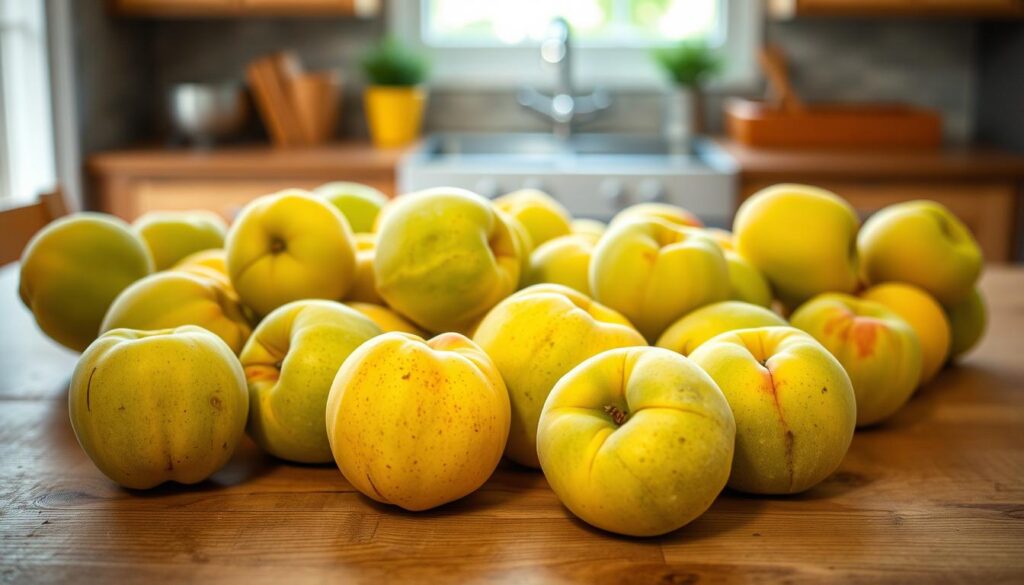
Start by looking closely and handling the fruit gently. You want to pick fruit that will turn from firm to sweet at home.
Avoiding Bruised Fruit
Don’t squeeze nectarines when you pick them. Bruising can ruin the fruit and make it spoil faster. Here’s what to do instead:
- Check for soft spots or color changes
- Pick fruits with smooth, unblemished skin
- Stay away from nectarines with holes or deep marks
Weight and Shape Considerations
A great nectarine feels right for its size. Look for fruits that:
- Are rounded and symmetrical
- Feel heavy in your hand
- Have a bright, rich color
Seasonal Selection Guide
Nectarines are best in different seasons. The sweetest ones are usually in mid-summer. When shopping, ask where the nectarines come from to get the freshest ones.
Pro tip: Farmers markets often have the freshest, tree ripened nectarines with the best taste and texture.
The Paper Bag Ripening Method
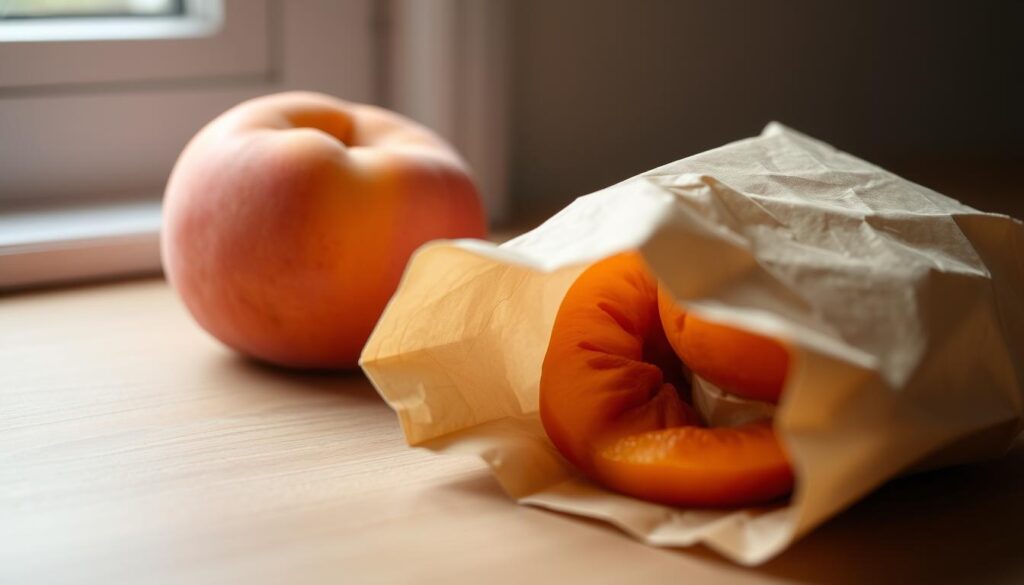
Ripening nectarines can be tricky, but the paper bag method is a simple solution. It turns hard fruit into sweet treats quickly and easily. This method is great for peaches with fuzzy skin, helping them ripen fast.
The science behind this method is cool. When you put nectarines in a paper bag, they release ethylene gas. This gas is a natural plant hormone that makes the fruit ripen faster. The trapped gas softens the fruit and makes it sweeter than if it were left out.
- Choose a clean, dry paper bag
- Select slightly firm nectarines
- Place fruits in a single layer
- Fold the top of the bag loosely
- Store at room temperature
To speed up ripening, add a ripe banana or apple to the bag. These fruits produce extra ethylene gas, making the fruit ripen faster. Check your nectarines daily by gently pressing them. They should be ready in 1-3 days.
Pro tip: When your nectarines turn deep in color and are slightly soft, they’re ready. The paper bag method ensures you get perfectly ripe, juicy fruit every time.
Natural Counter Ripening Technique
Ripening nectarines from your fresh orchard needs careful attention to specific conditions. The natural counter ripening method turns hard, unripe fruits into tasty treats in your kitchen.
Knowing the best conditions for ripening ensures you’ll enjoy perfectly sweet summer fruit every time. Let’s look at the key factors for successful nectarine ripening.
Temperature Control for Optimal Ripening
Keeping the right temperature is key for ripening nectarines. Follow these guidelines:
- Keep fruits at room temperature between 65-75°F
- Avoid cold surfaces that can slow down ripening
- Place fruits away from direct heat sources
Managing Humidity Factors
Humidity is important in the ripening process of fresh orchard fruits. Consider these tips:
- Use breathable fabrics like cotton or linen
- Avoid plastic containers that trap moisture
- Ensure moderate humidity levels
Air Circulation Requirements
Proper air circulation helps nectarines ripen evenly and prevents mold growth. Here’s how to create the ideal environment:
- Place fruits in a single layer
- Use a surface that allows air movement
- Rotate fruits periodically for uniform ripening
| Ripening Factor | Ideal Conditions | Impact on Fruit |
|---|---|---|
| Temperature | 65-75°F | Promotes even softening |
| Humidity | Moderate | Prevents excessive moisture |
| Air Flow | Consistent circulation | Ensures uniform ripening |
By following these natural counter ripening techniques, you’ll transform your summer fruit into delicious, perfectly ripe nectarines ready to enjoy.
Proper Storage of Ripening Nectarines
Storing your tree ripened stone fruit needs careful attention. This helps keep their quality high and their taste fresh. Nectarines are delicate and need special care to keep their sweet taste and smooth skin.
- Keep unripe nectarines at room temperature
- Place fruits on a countertop with space between them
- Avoid stacking to prevent bruising
- Check ripeness daily by gentle touch
For ripe nectarines, refrigeration is a good choice. Chilling slows down the ripening process. This lets you enjoy your fruits for longer. Ripe nectarines can stay in the fridge for 3-5 days.
| Ripeness Stage | Storage Method | Duration |
|---|---|---|
| Unripe | Room Temperature | 2-3 days |
| Ripe | Refrigerator | 3-5 days |
| Overripe | Use immediately | 1-2 days |
Pro tip: If you can’t eat all your ripe nectarines fast, freeze them or make preserves. This way, you can enjoy your tree ripened stone fruit for weeks.
Common Mistakes to Avoid During Ripening
Ripening sweet juicy nectarines needs careful attention and precise techniques. Many home cooks unknowingly make critical errors that can compromise the quality of their fruit. Understanding these common pitfalls will help you successfully transform hard nectarines into delectable treats.
Preserving the delicate nature of nectarines demands strategic handling. Certain practices can drastically reduce the fruit’s quality and potentially ruin your entire batch.
Dangerous Direct Sunlight
Exposing nectarines to direct sunlight might seem intuitive, but it can actually damage the fruit’s delicate skin. Intense rays can cause uneven ripening, creating hard spots and potentially burning the exterior.
- Avoid placing nectarines near sunny windows
- Choose indirect, ambient lighting for ripening
- Keep fruit away from intense heat sources
Improper Handling Techniques
Your nectarine’s texture depends on gentle treatment. Rough handling can bruise the fruit, leading to premature softening and potential decay.
- Always handle nectarines with clean, dry hands
- Use soft surfaces for ripening
- Avoid stacking heavy items on top of ripening fruit
Temperature Fluctuation Risks
Consistent temperature plays a crucial role in developing sweet juicy nectarines. Dramatic temperature shifts can interrupt the ripening process and negatively impact flavor development.
Maintain a steady room temperature between 65-70°F for optimal ripening conditions. Avoid placing nectarines near air conditioning vents or heaters that could cause sudden temperature changes.
When to Refrigerate Ripe Nectarines
Knowing when to put your prunus persica fruits in the fridge is key. It helps keep their yellow flesh tasty and fresh longer. Ripe nectarines need gentle care to keep their flavor and texture just right.
It’s time to chill them when they’re at their peak ripeness. Look for these signs to know when to store them:
- The fruit yields slightly when gently pressed
- Skin color is deep and uniform
- Aroma is sweet and fragrant
- Soft but not mushy texture
Putting them in the fridge slows down ripening. This lets you enjoy them for longer. Keep them in the crisper drawer, in a single layer to avoid bruises. Pro tip: Use a perforated plastic bag to maintain proper humidity.
Refrigerated ripe nectarines usually last 3-5 days. Before eating, let them warm up at room temperature for about 30 minutes. This brings back their full flavor.
Not all nectarines ripen the same way. Watch them closely and chill when they’re just right. This way, you get the best taste and texture.
Best Practices for Ripening Multiple Fruits
Ripening multiple stone fruits at home needs careful planning. When you have lots of summer fruit, knowing how to ripen them is key. You want to enjoy perfectly ripe nectarines without any waste.
Begin by sorting your nectarines by their ripeness. Make different piles:
- Firm, unripe fruits
- Slightly softening fruits
- Nearly ripe fruits
Use a staggered approach to ripen your fruits. Put firmer nectarines in a paper bag with a ripe banana or apple. This releases ethylene gas, speeding up ripening. Check your fruits every day to avoid over-ripening.
Here are some tips for handling multiple stone fruits:
- Keep unripe fruits at room temperature
- Rotate fruits every 12-24 hours
- Separate very ripe fruits from those still developing
Ripening can take 2-7 days, depending on the fruit’s start and the environment. By following these steps, you’ll enjoy fresh, tasty nectarines all season long.
Conclusion
Ripening nectarines needs patience and careful attention. By learning the right techniques, you can turn hard nectarines into sweet, juicy treats. You can use the paper bag method, natural ripening, or mix them up to get the best results.
Trying out different ways to ripen nectarines will make you better at it. Each nectarine is different, so what works for one might not work for another. Watch for signs like softness and smell to know when they’re ready.
Timing is key when enjoying summer fruits like nectarines. With some practice, you’ll get really good at ripening them. Don’t be afraid to try new things and listen to your senses. The reward is a juicy nectarine that’s full of summer flavor.
Enjoy the process of turning hard nectarines into delicious treats. They’ll make your taste buds happy and impress everyone you share them with.

